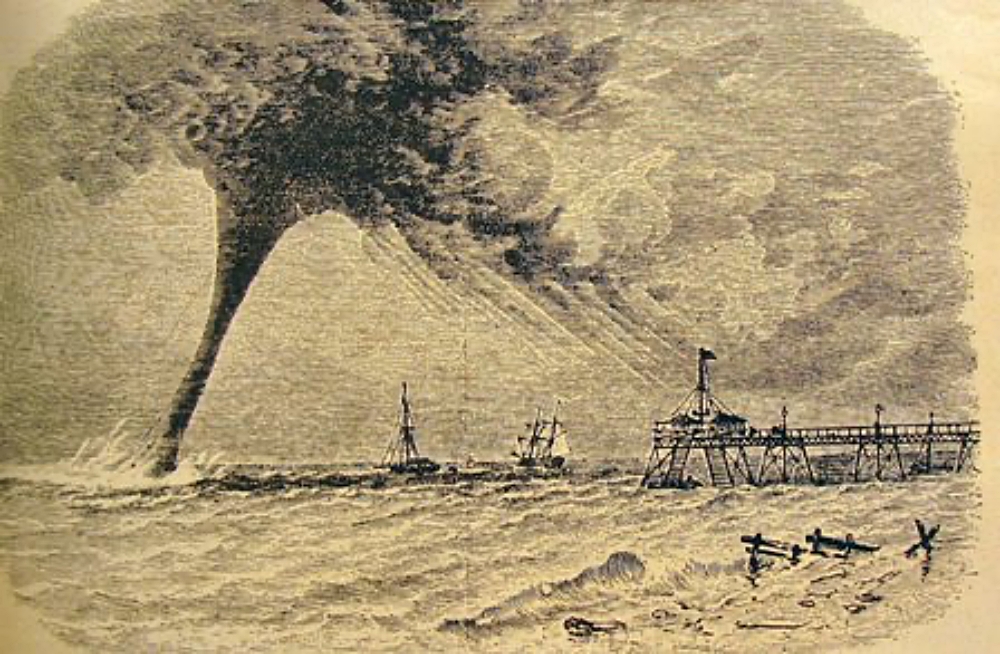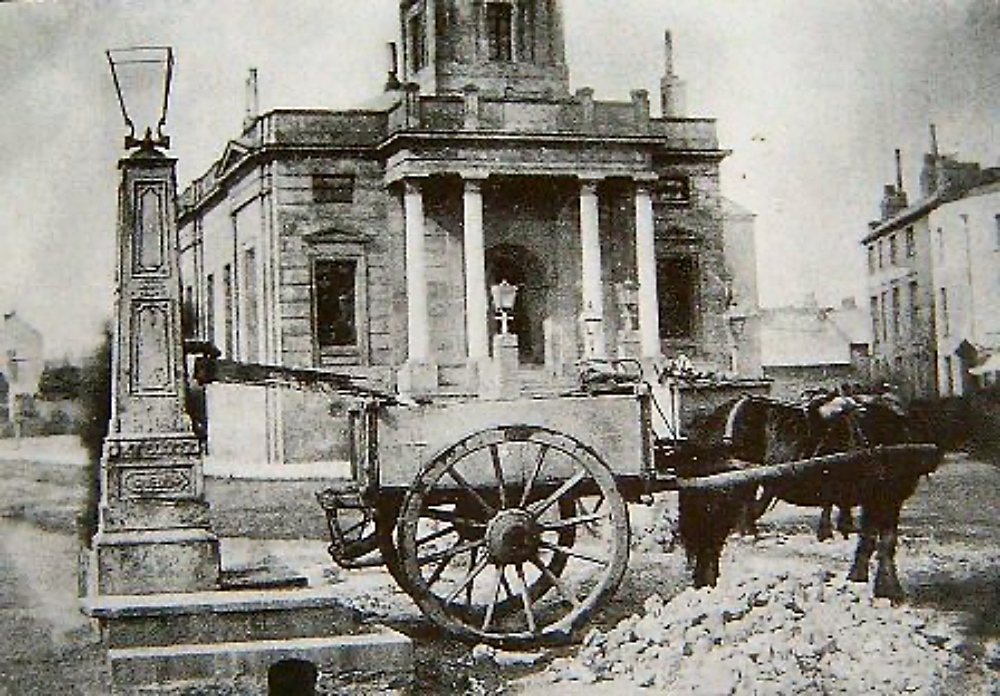Town’s place in the sun

ONE hundred and sixty years ago, weather records were few and accurate ones even rarer. There was no state service to organise the making and collection of weather observations and the British Meteorological Society – later to gain a royal prefix – had only just been founded.
There was, however, a Worthing man who, in 1850, assembled a collection of weather measuring instruments in the back garden of his home in The Steyne and began making observations that would change the perception of Worthing – and meteorology – forever.
Though primarily a man of medicine, Dr W.G. Barker studied meteorology as a means of increasing his medical efficiency.
He was convinced that many diseases could be cured or alleviated if the sufferer was able to live in the right kind of climate.
What his studies revealed gave Worthing an enormous boost for its health-giving climate and led to it being described by pundits as “a town where people go to die but never do”.
Barker set about proving his theories in a most practical and scientific manner so that, even today, it is difficult to challenge the results of his meteorological work, even if the medical opinion on its application has changed.
He undertook his mid-Victorian weather observations with great care, his instruments being supplied by Negretti and Zambra. The great meteorologist, James Glaisher, FRS, compared them with those used by the Royal Observatory and they bore his personal approval.
The “exposure area” where Barker took his observations was in the large garden behind his house at 18 The Steyne, about 100 yards from the sea, four-and-a-half feet from the ground and protected from the sun and rain by a covering projecting two feet from a wall with a north aspect.
Few records in the mid-19th century fulfil so well the conditions that would be demanded today and there can be few doubts in accepting them as entirely representative.
Despite this, Dr Barker refused to publish his first readings made before 1853 because of instrumental inaccuracy and because it was “the especial object of the British Meteorological Society to establish complete uniformity, without which the reader would only be led to erroneous conclusions”.
It turned out, in fact, that there was nothing “discordant” between the observations made before and after 1853, and both were later published by the BMS.
The principal object of Barker’s work was to produce “unassailable evidence that Worthing, by virtue of its situation and environment, was preferable to all inland and northern situations and could more than hold its own with West Country resorts of reputedly superior climate”.
He showed that in Worthing the range of temperature was small, a factor of considerable importance to physical well-being.

During the seven years that Barker produced complete records (1853-1859) the absolute maximum temperature failed to reach 80 deg.F in four of them and was between 80 deg. and 85 deg.F during the other three.
The absolute minimum temperature fell below 20 deg.F on only one occasion during those seven years. A century later, records kept over a 54-year period confirmed these figures.
Between 1900 and 1954, the maximum temperature in Worthing exceeded 85 deg.F in only five of the years but remained lower than 80 deg.F in 23 years.
The range of 80-85 deg.F was reached in the remaining 26 years.
A year in which the temperature does not achieve 80 deg.F at least once at an inland weather station in England and Wales is rare indeed.
Winter minima show a similarly moderate climate. In 35 years of the same 54-year period, the minimum winter temperature in Worthing was between 20 and 25 deg.F. and in only 10 years of the years did the thermometer fall below 20 deg.F.
Even the extremely severe winter of early 1947, during which temperatures down to 0 deg.F were recorded in England and Wales, brought the Worthing minimum to only 15 deg.F, a temperature often reached inland during cold spells.
That same year gave Worthing its hottest day since 1900 – the thermometer just reaching 90 deg.F in the shade.
Dr Barker’s rainfall records of Victorian times show a similar agreement with recent records but the measurement of sunshine is a comparatively recent aspect of meteorological recording and Dr Barker – perhaps wisely – did not concern himself with it.
But the introduction of accurate measurement has established clearly that the South Coast is the most favoured area of the British Isles for sunshine and that Worthing occupies a place of honour among south coast resorts.
The pre-eminence of Worthing over other towns to both east and west for many years may be both astonishing and inexplicable, but there is no evidence to show that the climate of the town has altered appreciably in the last 157 years.
What is certain is that Dr Barker’s claims for it, regarded by many living more than a century ago as extravagant, have been amply fulfilled.
We should be proud of W.G. Barker, the almost forgotten pioneer whose work in local meteorology was far inadvance of the standards of the day and who contributed so much to Worthing’s popularity as one of the healthiest places to live on the planet.